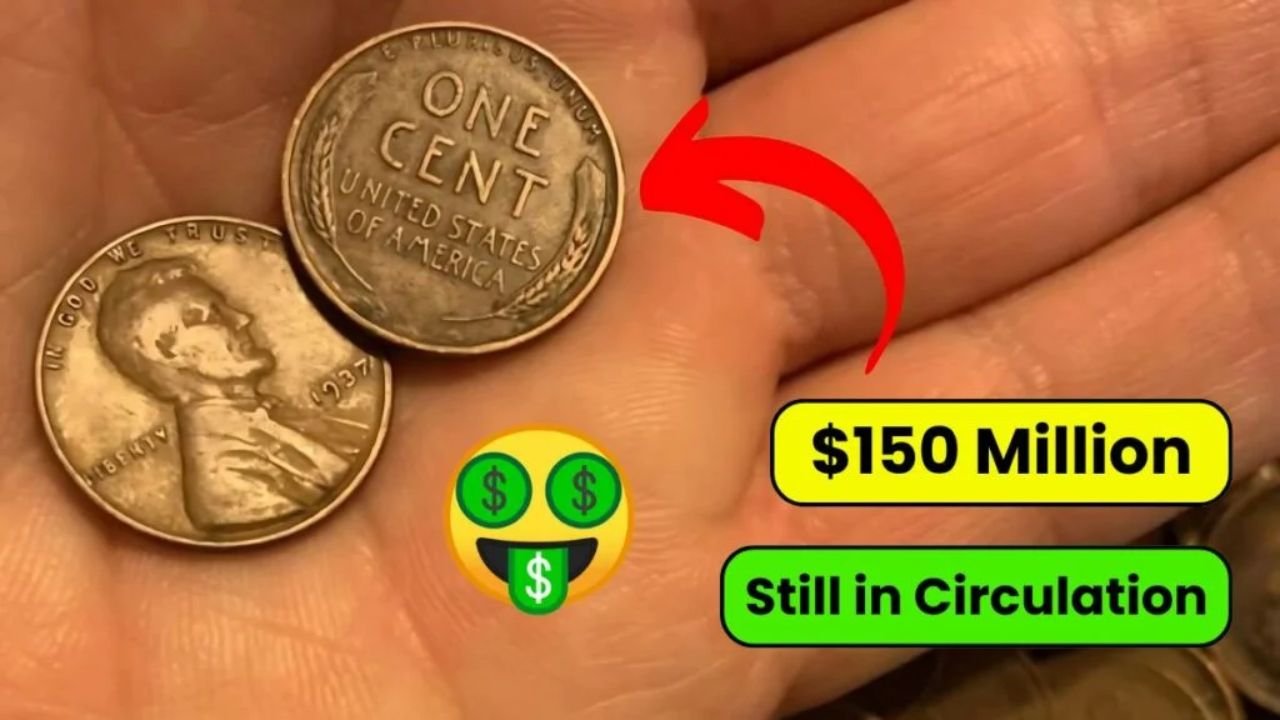Have you ever picked up a small, brown penny with Abraham Lincoln’s face on the front and two stalks of wheat on the back? You might’ve thought it was just another coin — one you’d toss into a tip jar or forget in a junk drawer. But what if that coin, known as the Lincoln Wheat Penny, was actually worth hundreds, thousands, or even a million dollars?
That’s not a fantasy. Across the United States, everyday people are discovering that some of these old pennies are hidden treasures. Whether tucked away in a coffee can or lost in pocket change, a rare Lincoln Wheat Penny could turn into a life-changing find.
In this article, we’ll explore what makes these pennies special, which versions are worth the most money, and how you can spot one of these valuable coins yourself.
What Is a Lincoln Wheat Penny?
The Lincoln Wheat Penny was first minted in 1909 to honor the 100th birthday of Abraham Lincoln. It was the first U.S. coin to feature a real person — and Lincoln was an obvious choice. On the front is his iconic profile, while the back shows two stalks of wheat and the words “ONE CENT” and “UNITED STATES OF AMERICA.”
This wheat-back design ran until 1958, after which it was replaced by the Lincoln Memorial. That means any penny minted between 1909 and 1958 with the wheat design is part of this historic series.
Millions were circulated during this time, but not all are created equal. Some rare editions and minting errors have made certain Lincoln Wheat Pennies incredibly valuable.
Why Are Some Lincoln Wheat Pennies So Valuable?
While most Wheat Pennies are only worth a few cents over face value, a select few have become prized collector’s items. Their value depends on a few key factors:
- Rarity: Some years and mint locations produced very few coins.
- Mint Errors: Mistakes like double prints, missing letters, or wrong materials.
- Condition: Coins in “mint” or near-mint condition are significantly more valuable.
- Metal Composition: Some pennies were made using rare or incorrect metal blanks.
These factors can skyrocket the value of a simple penny into the thousands or even more.
The 1943 Copper Lincoln Wheat Penny: A Million-Dollar Mistake
One of the most famous examples is the 1943 Copper Lincoln Wheat Penny. During World War II, copper was in short supply, so the U.S. Mint started making pennies out of steel coated with zinc. These 1943 steel pennies have a silvery look and are common.
But by accident, a few copper blanks from 1942 were still in the minting machines. These rare 1943 copper pennies are among the most valuable coins in U.S. history.
In fact, one sold at auction for over $1 million, and others have fetched prices between $100,000 to $250,000, depending on condition.
It’s the kind of find that keeps coin hunters hopeful — and quietly makes collectors rich.
Other Valuable Lincoln Wheat Pennies to Look Out For
While the 1943 copper penny gets the most attention, there are many other Lincoln Wheat Pennies worth significant money. Here are some top coins to watch for:
- 1909-S VDB: The first year Lincoln cents were minted. The San Francisco mint added designer Victor D. Brenner’s initials (VDB), and this rare combination can sell for thousands.
- 1914-D: A low-production penny from the Denver mint. These are hard to find, especially in good condition, and can be worth several thousand dollars.
- 1922 No D: This Denver-made coin is an error penny — the mint mark is missing. Rare and valuable, especially in mint condition.
- 1955 Double Die: One of the most famous U.S. error coins. The date and lettering are visibly doubled, making it easier to spot. These can fetch $1,000 to $10,000+.
How to Check Your Change for a Rare Lincoln Wheat Penny
You don’t need to be a professional numismatist (coin expert) to find valuable coins. You just need a little time and attention. Here’s how to begin your search:
- Check the Year: Key years include 1909, 1914, 1922, 1943, and 1955.
- Look for Mint Marks: Under the date, you might see “D” (Denver), “S” (San Francisco), or no letter (Philadelphia). Certain combinations are rare.
- Use a Magnet: If you have a 1943 penny that doesn’t stick to a magnet, you might have the rare copper version!
- Examine for Errors: Look closely for doubled text, off-center prints, or missing details.
- Inspect Condition: The less worn a penny is, the more it may be worth.
If you find something that looks unusual or valuable, take it to a local coin dealer or send it to a grading service like PCGS or NGC for professional appraisal.
Why Coin Collecting — and the Lincoln Wheat Penny — Are Making a Comeback
Coin collecting is once again gaining popularity. Some of that comes from stories of big auction wins, but it also comes from the historical value. Coins like the Lincoln Wheat Penny offer a unique look into America’s past — our presidents, our wars, and even our mistakes.
Plus, in an age where everything is digital, there’s something special about holding a little piece of history in your hand.
Whether you’re a curious beginner or a lifelong collector, hunting for a valuable Lincoln Wheat Penny is more than a hobby — it’s a treasure hunt.
Final Thoughts
The Lincoln Wheat Penny may seem like just another coin, but it could hold extraordinary value. From the ultra-rare 1943 copper penny to other historic and error-filled editions, these coins are quietly changing lives.
So next time you dig through your change jar or find a penny on the ground, don’t just walk past it. That little coin might be a forgotten piece of history — or a hidden jackpot waiting to be found.
Some Important Link
| Telegram Group | Click Here |
| WhatsApp Group | Click Here |
| Home Page | Click Here |















